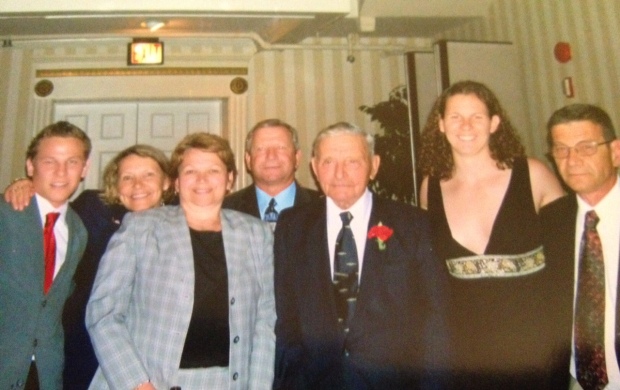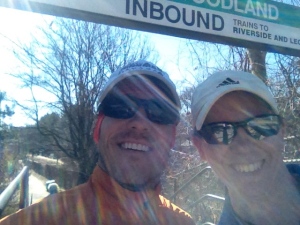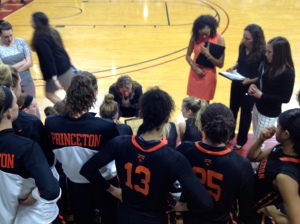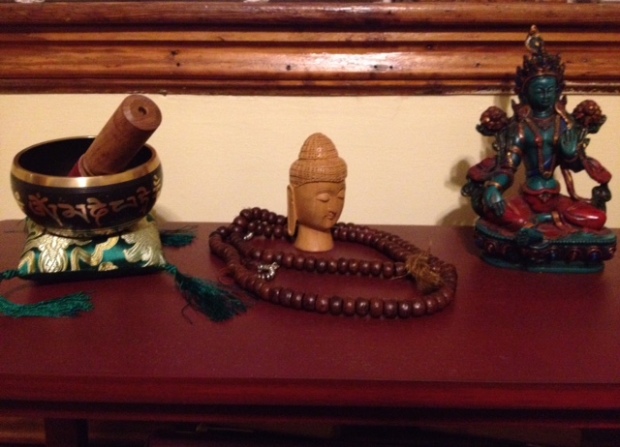the LOVE Sangha
Posted by annbruck in Self Practice, Yoga/Meditation on July 31, 2015
I hope this piece finds you enjoying the beautiful summer. A new month is upon us and with that, I also have a few new things in the works. One being, I will be moving my current blog over to another service. Over the next few postings, I will provide information as to where you can continue to follow me on this journey.
For today’s particular post, I would like to share about my latest project. The LOVE Sangha.
I wear the LOVE tattoo as a means of creating awareness and providing support for friends and family affected by addiction, depression, self-harm and suicide. With several people in my life that battle mental health issues, it is one way I can help bring light to their world.
Statistics tell us:
- That for every alcoholic, 16 people are directly affected. This includes spouses or partners, kids, friends and co-workers, just to name a few.
- In 2012, an estimated 16 million adults aged 18 or older in the U.S. had at least one major depressive episode in the past year. This represented 6.9 percent of all U.S. adults.
- Suicide is the 10th leading cause of death; homicide ranks 16th.

As someone who attends al-anon and has loved ones whom have experienced major depression, which led to suicide or attempted suicide, I have also found great refuge with meditation. That is why I have created the LOVE Sangha. I chose the word LOVE, as an acronym: Let Others Voluntarily Evolve. One of the most difficult things for those in al-anon to do is let go. We can’t change someone who isn’t willing to do it for themselves. And it is just as important to work on yourself. The LOVE Sangha is not a replacement for a traditional 12-step meeting. Rather, it is a safe space to help you explore a deeper sense of self, as a community. One does not need to be part of any 12-step program or have any experience with meditation in order to participate.
This is a free online forum, which provides anyone from around the world to participate. Using a video conferencing system, it will allow you to participate from any computer, tablet or phone. Having a support system is equally important for those who are effected by mental health.
Please reach out to me directly if you or anyone you know may be interested.
be well-
No such thing as TMI
Posted by annbruck in Fitness, Self Practice on July 17, 2015
When it comes to providing the best possible service to my clients, I need to know as much as I can about them as a whole. The first time we meet, I ask a lot of questions. This means health history (both their own and possible family), medications, current/past injuries, nutritional habits, goals, aspirations, experience with previous trainers, their likes/dislikes for certain exercises. The more I know, the more individualized a program I can create.
Often times clients will leave out information, thinking that it is irrelevant, maybe a little embarrassing or they just forget. Below are a few key things to share with your trainer/wellness provider so they can best serve you.
- Any chronic or acute discomfort, injuries, physical limitations, medical conditions or procedures.
- Changes in nutritional programs such as cleansing, supplement use, testing out a new format such as vegan, Paleo, etc.
- Modifications to time committment, daily responsibilities, or additional stress.
- If you are unhappy with the results you are getting, have the conversation about what changes can be made to make sure you are moving in the right direction.
The reason it is called personal training is because it is specific for you. Help to create an open dialogue and share what you can. You will see results that much faster.
be well-
27 Seconds
Posted by annbruck in Self Practice on June 5, 2015
A few weeks ago I walked into a local coffee shop behind three young ladies. I am guessing they were around 12-14 years old and clearly coming from some sort of dance/ballet class. As I listened to them order their lunch, I had a pit in my stomach. “I’ll just have the fruit cup,” said one. Another, “Can I have the chicken bacon avocado wrap without bacon, avocado or mayo?” The last, “Just a large iced coffee please.”
It broke my heart to see these beautiful kids feel it necessary to eat so little just to fit the mold of society. If nothing else, Caitlyn Jenner reinforced how our media portrays women. Nearly every news outlet commented how on beautiful she was. There was no talk about anything other than her looks.
By definition, self-esteem is the way in which an individual perceives themself. In other words, their own thoughts and feelings about their ability to achieve in ways that are important to them. This self-esteem is shaped not only by a child’s own perceptions and expectations, but also by the perceptions and expectations of significant people in their life-how they are thought of and treated by parents, teachers and friends.
Please take the time to watch this very powerful video.
Below are a few links on how help kids boost self-esteem.
Now that schools are on the verge of turning to summer vacation, what a great opportunity to spend quality time talking about these issues.
be well-
Invisible but Real
Posted by annbruck in Self Practice on May 21, 2015
About ten years ago I had the great fortune to join my grandfather and other members of our family as the Navy held a ceremony honoring sailors who took part in the Battle of Midway. As I reflect on those few days in Washington DC with Grandpa Bruck and crew, there are memories I hold close to my heart.
There are two which stick out more so than others.
- While most of the family went to visit some of the other memorials in the surrounding area, Grandpa and I sat on a bench near the WWII Memorial. Not much was said, just enjoying each other’s company. People would approach us, wanting to shake his hand, offer “Thanks for your service,” and call him a hero. He obliged with the handshake, gave a nod to the thanks but would respond by saying, “I’m no hero. The heroes are at the bottom of the sea.” He was always the humble man.
- At the ceremony itself, many great words were said about all of the veterans. They asked each of them to stand to be recognized. When it was Grandpa’s turn, he insisted that our whole family stand. As much pride he held for the Navy, he had even more for those around him.
Growing up with Grandpa as a WWII veteran, four of his sons (which includes my father) also Navy men and my lone uncle on the other side of the family serving in the Army, I heard many great stories about their time in the military. Stories of pride, service and brotherhood.
While there are many great stories, there are just as many stories of veterans returning home with Post Traumatic Stress Disorder (PTSD). Even though it may be invisible from the naked eye, it is very real.
The following information is taken from www.ptsd.va.gov
What is PTSD-
It can occur after you have been through a traumatic event that you see, hear about, or that happens to you, like: sexual/physical abuse and assault, combat exposure, terrorist attack, or natural disaster.
Types of PTSD-
- Reliving the event (also called re-experiencing symptoms)
You may have bad memories or nightmares. You even may feel like you’re going through the event again. This is called a flashback.
- Avoiding situations that remind you of the event
You may try to avoid situations or people who trigger memories of the traumatic event. You may even avoid talking or thinking about the event.
- Negative changes in beliefs and feelings
The way you think about yourself and others may change because of the trauma. You may feel fear, guilt, or shame. Or, you may not be interested in activities you used to enjoy. This is another way to avoid memories.
- Feeling keyed up (also called hyperarousal)
You may be jittery, or always alert and on the lookout for danger. Or, you may have trouble concentrating or sleeping. This is known as hyperarousal.
Other problems that may occur-
- Depression or anxiety
- Drinking or drug problems
- Physical symptoms or chronic pain
- Employment problems
- Relationship problems, including divorce
What treatments are available?
When you have PTSD, dealing with the past can be hard. Instead of telling others how you feel, you may keep your feelings bottled up. But treatment can help you get better. There are two main types of treatment, psychotherapy (sometimes called counseling) and medication. Sometimes people combine psychotherapy and medication.
Psychotherapy for PTSD
Psychotherapy, or counseling, involves meeting with a therapist. There are different types of psychotherapy:
Cognitive behavioral therapy (CBT) is the most effective treatment for PTSD. There are different types of CBT, such as cognitive therapy and exposure therapy.
One type is Cognitive Processing Therapy (CPT) where you learn skills to understand how trauma changed your thoughts and feelings.
Another type is Prolonged Exposure (PE) therapy where you talk about your trauma repeatedly until memories are no longer upsetting. You also go to places that are safe, but that you have been staying away from because they are related to the trauma.
A similar kind of therapy is called Eye Movement Desensitization and Reprocessing (EMDR), which involves focusing on sounds or hand movements while you talk about the trauma.
Medications for PTSD
Medications can be effective too. A type of drug known as a selective serotonin reuptake inhibitor (SSRI), which is also used for depression, is effective for PTSD. Another medication called Prazosin has been found to be helpful in decreasing nightmares related to the trauma.
IMPORTANT: Benzodiazepines and atypical antipsychotics should generally be avoided for PTSD treatment because they do not treat the core PTSD symptoms.
As we enter this holiday weekend, I encourage you to reflect on the meaning of Memorial Day, and all that our veterans endure, visible or not.
be well-
Silence and Solitude
Posted by annbruck in Self Practice, Yoga/Meditation on May 13, 2015
I have been on the fence over the last few days as to whether or not to write a piece about my experience from last week. After much back and forth, I think it is important to share my experience, even if it’s for my own benefit as a way to document my first silent retreat. My hope is that maybe it will inspire others to go on retreat someday.
Having built a strong foundation of a daily meditation practice and after the encouragement of a dear friend and feeling like I was ready, I set forth for my first seven-day silent retreat. “No tv’s? Could you do puzzles or board games like cribbage?” These were a few questions asked by my friend when talking about my time away last week. My reply, “Nope. Complete silence.”
The act of Noble Silence…not just limiting, but disconnecting from speech, reading, writing, anything with an on/off button. Seven days of sitting and walking meditation from 5:45am-10pm every day. My hope for this retreat was to deepen my meditation practice. It has done so much more than that.
In one sense, it’s difficult to really explain what I mean by that. For those of you who have seen the movie “City Slickers” with Billy Crystal, it’s like him finding that one thing that changes his life/makes him happy. An intangible for most and it’s going to be different for each person.
In another sense, I have already seen how this experience has changed my life. Here are just a few:
- learning to create space between stimulus and reaction/response
- having a strong anchor to help come back to center
- the importance of metta for myself
When I first arrived at the retreat center, it was like being back home where there are rolling hills, farm land and forests. Being in an environment like this always brings a sense of peace to me. Because I arrived before registration began, I was shown my room and invited to take a walk through the woods. There were several well-marked trails to choose from.
At 3pm I looked at one last picture on my cell phone and turned it off until silence was broken seven days later. During the registration process I was assigned my yogi job, breakfast put-away. This meant each morning after breakfast I put away all food leftover and helped clean the dining hall. I also signed up to be a bell-ringer. I was to ring the bell around campus before our last sit each night.
During the opening remarks, the teachers explained the schedule for the week, what emotions may arise, the five precepts, and talked about the importance of Noble Silence. The idea of silence throughout the whole week was so we could dig deep within ourselves to notice. Notice thoughts, mindfulness, awareness, hindrances, attachments.
Each day brought on a whole range of experiences from how my physical body felt to thoughts that would float in and out, and emotions that would stir and then bubble and come to a full on boil.
One of the most vivid memories I have from last week was on May 7th. This was an emotional day to begin with because it was the anniversary of my grandmother’s death. Around 8:20pm, I stepped outside to watch the sun set. A few other were out there and then more and more gathered. It was the most beautiful red and orange combination with slivers of low-lying clouds. I was perched on the stone wall and watched the sun set through the silhouette of tree branches. As I sat there, I kept imagining what the sunset looked like in Portsmouth, Iowa with the cemetery overlooking the rolling hills. If it were the same as I had, Grandma would surely be smiling down on us. When I went back into the meditation hall for our last sit of the evening, that was the most serene 45 minutes I had all week.
Each day we had a metta practice; loving, kindness and compassion. And everyday was geared toward different people in our lives; a loved one, a neutral person, a difficult person, the world as a whole, and one day for ourself. Showing others how much they mean to me is very important, whether it’s a hug, a text message or just a friendly thought I put out to them. When we had to show metta toward ourselves, this was much more difficult. And that was a big take-away for me, learning to show more compassion to myself. The teachers offered mantras or phrases to put out for each of these people as suggestions. Most of them worked but I definitely found a few others that resonate more so with me.
By the time Sunday morning came around and we were ready to break silence, I felt so at peace. I’m not sure what I was expecting by attending the retreat, but I certainly received what I needed. “That one thing is what you need to figure out.”
When asked if I’d go back, yes, most certainly I will be back.
be well-
Even a weed turns into a Flower
Posted by annbruck in Fitness, Self Practice, Yoga/Meditation on April 29, 2015
Last night I came across a video portraying scenes around Baltimore and all that has been happening this week. Unlike most of the violent acts taking place, this was something different. Several clergy from all denominations were linked arm in arm, marching down the street. A true sign of peace and compassion. Ahimsa is a Sanskrit term for “non-violence,” and that is exactly what these men and women were practicing.
The following is taken from an article written by Dorna Djenab called Ahimsa: The Yoga Practice of Non-Violence-
The essence of ahimsa is non-violence of our own heart. The violence we inflict on each other is only the outward manifestation of the war raging inside ourselves and it is only by stopping the war within that we can stop the war without.
Violence is manifested in actions, in words and in thoughts. We may consider ourselves non-violent people but violence can work on very subtle levels. It has many disguises.
Thoughts of guilt, shame, resentment, disappointment all have a seed of violence within them. Words like *should* and* must* are the same. When we are unable to forgive ourselves or someone else, when we carry resentment; when we expect far too much of ourselves and put the responsibility of the whole world on our shoulders; when we expect the whole world to run according to our liking we are being violent towards ourselves and the rest of the world. When we don’t act according to our truth, but out of our fears, we are being violent to ourselves… Truth and nonviolence are inseparable. As Ghandi said: When I look for Ahimsa, Truth says, ”Find it through me.” When I look for Truth, Ahimsa says, ”Find it out through me.”
Non-violence is unconditional love, it is true compassion. We achieve that non-violence by learning to love and be loved; but how is it possible to love and be loved if we choose to escape or ignore some aspects of ourselves?
Yoga encourages us to meet our inner darkness impartially and compassionately, so that it can be transformed without being acted out in the world. We practice how to meet our inner violence nonviolently and how to express our negativity without hurting anyone, including ourselves. When we learn to discharge our negative energies with the positive intention to transcend these aspects of ourselves, we contribute to spreading peace in the world.
On the mat, intend to practice non violence in action and perform the poses gracefully without force. Intend to respect and love your body’s limitations. Have the intention to practice non violence in your mind. Watch and become aware of your thoughts and see if there are any that contain seeds of violence towards you or another. Once you’ve become aware, you won’t need to push it away, just recognize it, watch it come to your awareness and watch it leave. Thoughts come and go. It is by holding onto them and repeating them over and over that they become the source of our violent actions, or violent words. If you just observe them, without reacting to them, you’ll see that they will leave your awareness as easily as they came.
When we allow ourselves to fully experience the hate and pain within us without cringing, violence, hatred and pain will disappear and open doors to new understandings and liveliness. Just as a flower begins its journey from a seed beneath the earth, non-violence begins out of self acceptance and love of the true Self, deep within the human heart. Yoga leads us to a peaceful reconciliation with our own true nature.
be well-
What matters to you?
Posted by annbruck in Body Mechanics, Fitness, Self Practice on April 7, 2015
I would like to give a shout-out to my sister and her colleagues as April is OT Month.
Occupational therapists play a vital role in helping individuals participate in things they want and need to do and to help manage their health to be as active and independent as possible. One of the first questions they will ask is What matters to you?, rather than What is the matter with you? Common interventions include helping children with disabilities to participate fully in school and social situations, helping people recovering from injury to regain skills, and providing supports for older adults experiencing physical and cognitive changes.
Many people question the difference between physical therapy and occupational therapy. PT deals with pain, strength, joint range of motion, endurance, and gross motor functioning, whereas OT deals more with fine motor skills, visual-perceptual skills, cognitive skills, and sensory-processing deficits.
Occupational therapy is often thought of for adults only. But that is not the case. According to the AOTA, kids with these medical problems might benefit from OT:
- birth injuries or birth defects
- sensory processing disorders
- traumatic injuries (brain or spinal cord)
- learning problems
- autism/pervasive developmental disorders
- juvenile rheumatoid arthritis
- mental health or behavioral problems
- broken bones or other orthopedic injuries
- developmental delays
- post-surgical conditions
- burns
- spina bifida
- traumatic amputations
- cancer
- severe hand injuries
- multiple sclerosis, cerebral palsy, and other chronic illnesses
The “occupation” of children is to thrive, and occupational therapy practitioners work with children and young adults, from infancy through college, and their families to facilitate participation and independence.
Thank you to all OT’s as they help to improve our lifespan.
be well-
21 Miles, all Smiles
Posted by annbruck in Body Mechanics, Fitness, Self Practice, Yoga/Meditation on March 29, 2015
Signs of spring are popping up all over the place. The snow is melting, a few flower buds are sprouting and many of the runners preparing for the Boston marathon likely had their “last long run,” before Marathon Monday. Today’s weather conditions were much like what I ran through last year at this time for my last long run prepping for Boston, with my dear friend, Alex. A few layers needed but the sun was shining. Here is a before and after picture at the beginning of our 21 mile run.
With running season ramping up, I asked my running expert friends and family members for some race day tips, whether you are training for a 5k, marathon, ultramarathon, or an event like Ragnar. Here’s what they had to say.
- Trust in your training. If you have followed your training plan, trust that you are able to finish the race.
- Come race day, DO NOT CHANGE anything! This includes nutrition, pace and clothing. Do not buy any special shorts, pants or tops to wear race day. If you have not trained in it, do not wear it – you don’t know if any discomfort or chaffing will result in new clothing and you don’t want to deal with pain caused from new hot spots.
- Don’t get caught up in the hype…ie, don’t let the atmosphere and other runners alter your pace. You have trained to run a certain pace, don’t end up bonking because you went out too fast. You want to have a negative split, meaning your second half of the race is faster than your first half.
- If you have friends/family attending the race, have them spread out throughout the course. If they are able to get to desolate/isolated parts of the course, even better. It’s great to see familiar faces in lonely parts of the course.
- Many races have a camp to hang out at before the race. Bring toilet paper, you don’t want to get stranded.
- Even though you may not feel thirsty, it’s usually a pretty good idea grab a drink at the rest stops. Alternate between water and sports drinks.
- Have fun and enjoy the experience.
be well-
Survive, and Move On
Posted by annbruck in Uncategorized on March 21, 2015
This is one of my most favorite times of the year, March Madness. Athletes and coaches eagerly awaited their fate to see if they would make the list of 64 best and if so, who their first opponent would be. This year in particular is a bit more special as I have dear friends, near and far, who made the cut. In addition, my alma mater has moved onto the Elite 8 for DII.
March is a game of Survive, and Move On. Scouting reports, film, controlling the controllables, tangibles, intangibles, calling on prior experiences are all part of the process in helping teams to move forward.
This morning, I’ll be sitting down with a group of like-minded people for our second day of a three-day workshop. Much of the focus is a brain-based training system. The brain is what makes everything else function. And the number one job of the brain- survival.
Neuroscientific research has been at the forefront for the last several years. Understanding the brain is constantly being challenged in environments, both internally and externally. Examples might be are you reacting or responding to emotions, checking for cars as you cross the street. Much like March Madness, we call on prior experiences to survive and move on.
After I’ve had a few days to digest all the information from this workshop and taken time to watch my friend’s games on dvr, I’ll follow up with more details.
Until then, Got your 6.
be well-
Lulu’s, Tattoos, Beads and more….
Posted by annbruck in Self Practice, Yoga/Meditation on March 13, 2015
Self admittedly, when I came onto the yoga scene first as a practitioner and then a teacher, I wanted to look and feel the part. Often times, a large chunk of my paycheck went to pay for things such as designer yoga gear and mala beads. Tattoo ideas such as the OM symbol, prayer hands or something in Sanskrit passed through my mind. The idea of attending Burning Man could be fun.
It was as if there was a checklist of things I had to mark off, one by one. And then there was a shift. I had the confidence in who I was and what I stood for.
The cost of clothing, class passes, workshops, retreats, magazines, singing bowls, mala beads, tattoos, all in the name of yoga, is a multi-billion dollar business. There is no doubt I have helped to contribute to that number.
Last week I went into one of my favorite shops in town. It happens to be full of handpicked items the owner brings back from Nepal. He always takes the time to give me some sort of lesson while I am there and I am eager to learn what he has to share. On this day, he explained the symbolism of the Green Tara’s posture and mudra (hand position) and what she stood for. And then he talked about the significance of 108, the mala beads, by drawing out diagrams. Having someone take the time to teach me a bit of history behind a 5,000 year old practice is impactful.
For me, the brand name of a clothing line is no longer important. I am just as comfortable wearing sweat pants and a tee-shirt while teaching. Beads I wear around my wrist are there to help remind me that meditation can be done anywhere, anytime. Singing bowls offer a beginning and an end to my practice. As for that tattoo…..
Everyone is going to have their own path, their own way of living. Find what is important and meaningful to you.
be well-








